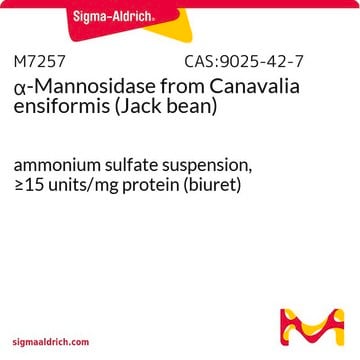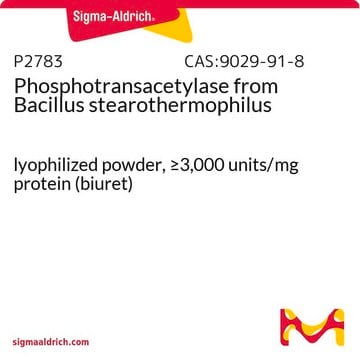A6781
Acetate Kinase from Bacillus stearothermophilus
lyophilized powder, 400-1,200 units/mg solid
Synonyme(s) :
ATP:Acetate phosphotransferase, Acetate Kinase Bacillus stearothermophilus
About This Item
Produits recommandés
Source biologique
bacterial (Bacillus stearothermophilus)
Niveau de qualité
Forme
lyophilized powder
Activité spécifique
400-1,200 units/mg solid
Température de stockage
2-8°C
Application
Actions biochimiques/physiologiques
Définition de l'unité
Forme physique
Mention d'avertissement
Warning
Mentions de danger
Conseils de prudence
Classification des risques
Met. Corr. 1
Code de la classe de stockage
8A - Combustible corrosive hazardous materials
Classe de danger pour l'eau (WGK)
WGK 3
Point d'éclair (°F)
Not applicable
Point d'éclair (°C)
Not applicable
Certificats d'analyse (COA)
Recherchez un Certificats d'analyse (COA) en saisissant le numéro de lot du produit. Les numéros de lot figurent sur l'étiquette du produit après les mots "Lot" ou "Batch".
Déjà en possession de ce produit ?
Retrouvez la documentation relative aux produits que vous avez récemment achetés dans la Bibliothèque de documents.
Notre équipe de scientifiques dispose d'une expérience dans tous les secteurs de la recherche, notamment en sciences de la vie, science des matériaux, synthèse chimique, chromatographie, analyse et dans de nombreux autres domaines..
Contacter notre Service technique







